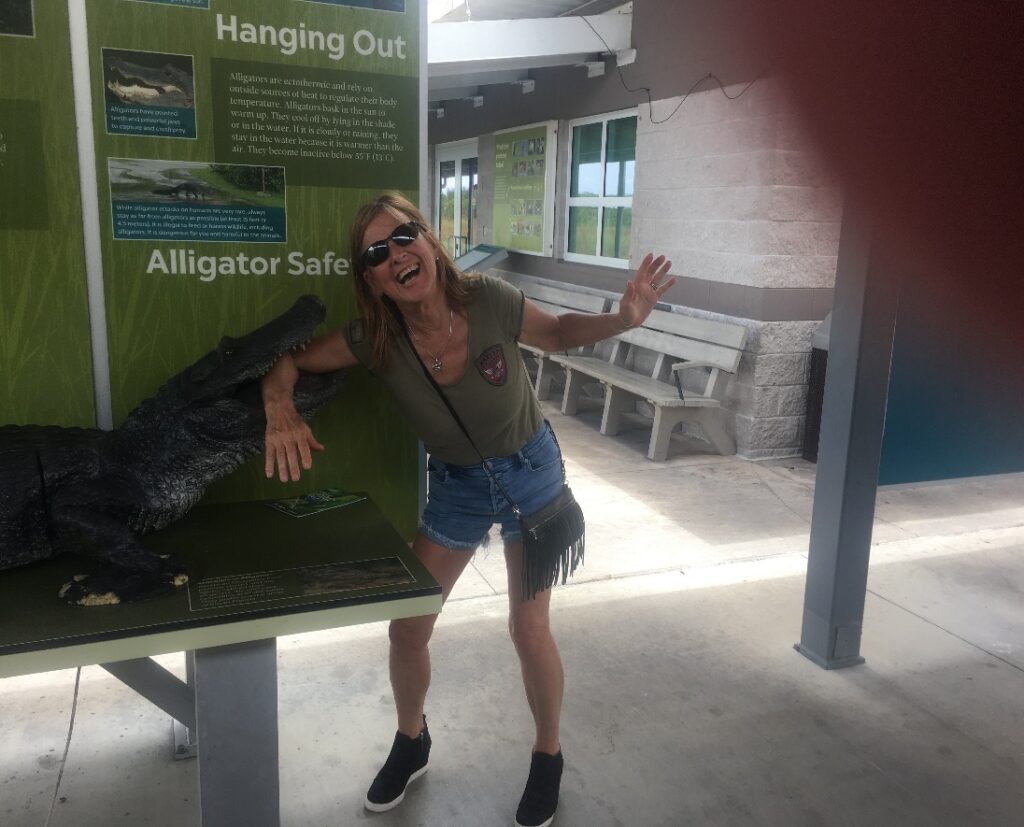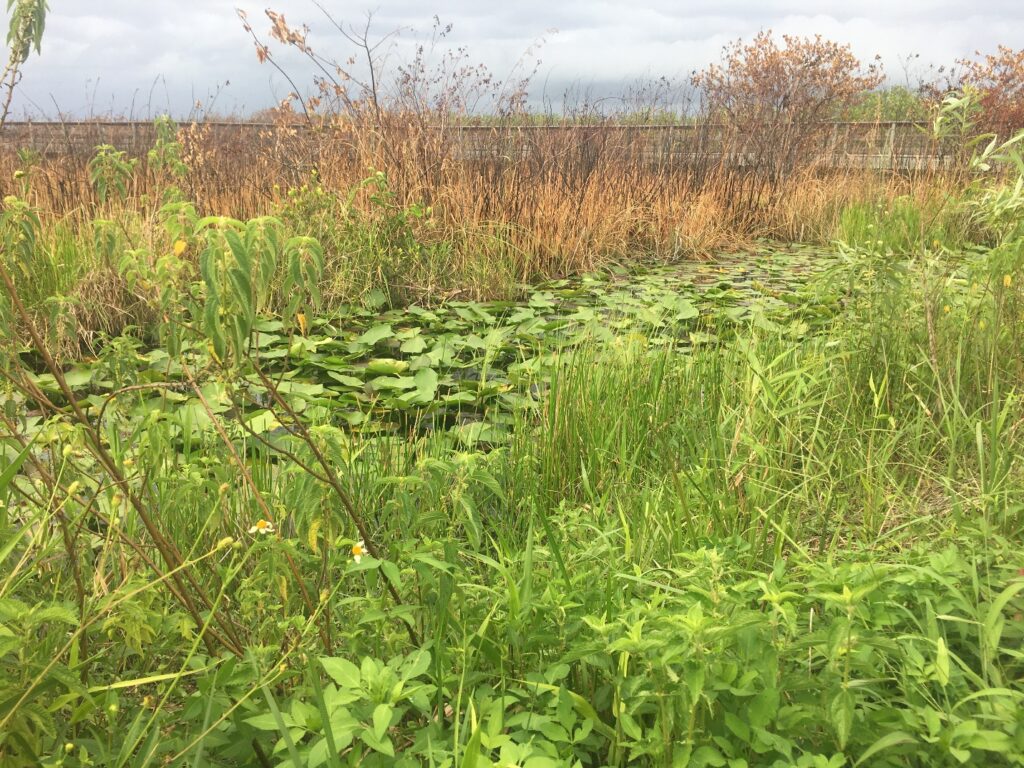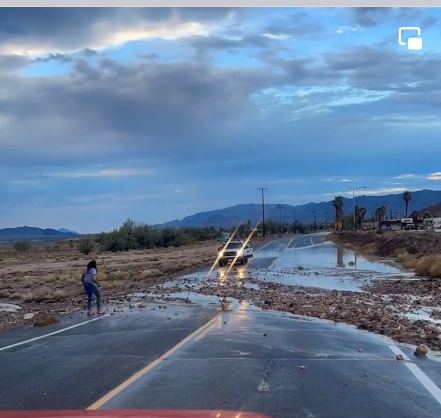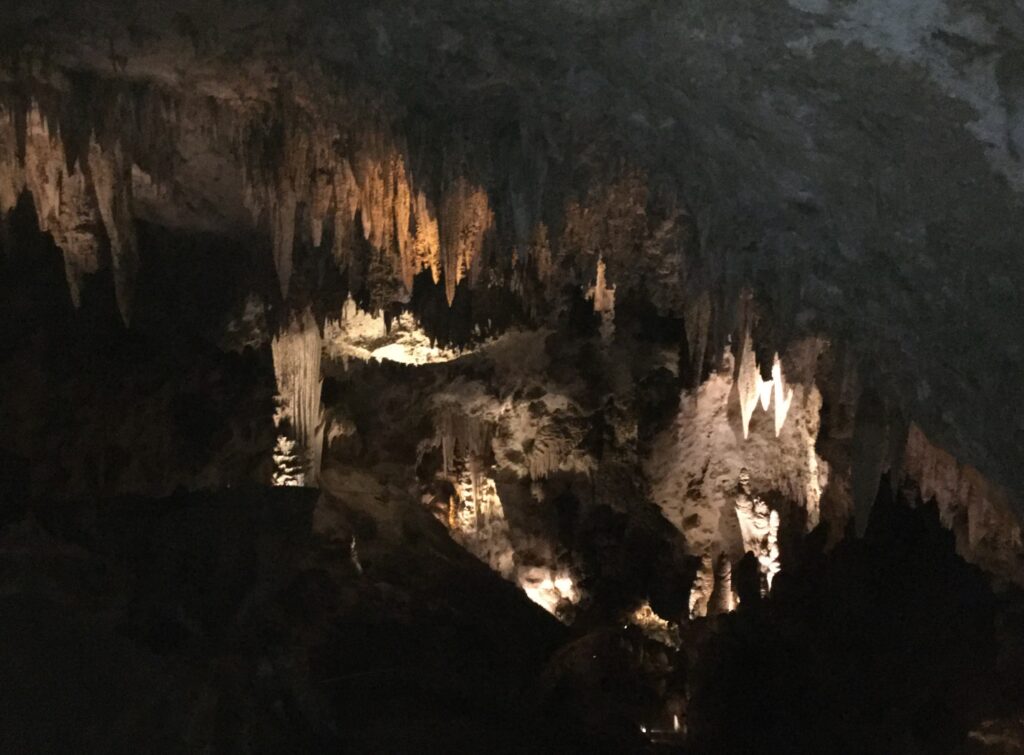Landed at the Miami airport and headed straight to the closest visitor center, Shark Valley, which is thirty-four miles from the airport. Arrived at the visitor center mid-day, and as soon as we, Phil, and I got out of the air-conditioned car it became obvious that hiking the Everglades in the summer should be done in the morning. The heat and humidity are overwhelming. Yes, I live in the desert and will hike in 100+ degrees, but I now understand the true understanding of “It’s a dry heat”. In this desert girl’s opinion, I just don’t know how the east coasters survive the humidity. Not willing to surrender to mother nature, we ventured out along the boardwalk, and looked for alligators in the marsh waters, without success. Enjoyed some of the signs explaining to keep your distance from the alligators. Leaving me to ponder that someone needs to be warned. Really? Wow.
Everglades National Park is truly one of the most unique national parks and has the world’s most diverse ecosystems.
Our first day at the park was too brief to really get a feel for all it has to offer, but since we came in on a red-eye we were too tired to go onward. We will return to the park in the next couple of days.
On our return visit, we were coming from Key West. It was decided that we would go to the Ernest F Coe visitor center. This is the main park road which is a scenic thirty-eight-mile drive from the Ernest F Coe visitor center to the Flamingo visitor center.
At the Ernest Coe visitor, we took the Anhinga Trail. This was an easy .8-mile walk, leading us through the habitat of birds, turtles, fish, and alligators. We were able to see much wildlife, excluding the elusive alligator.
Here are some of the sights and views along the Anhinga Trail:
Everglades National Park Photo Gallery
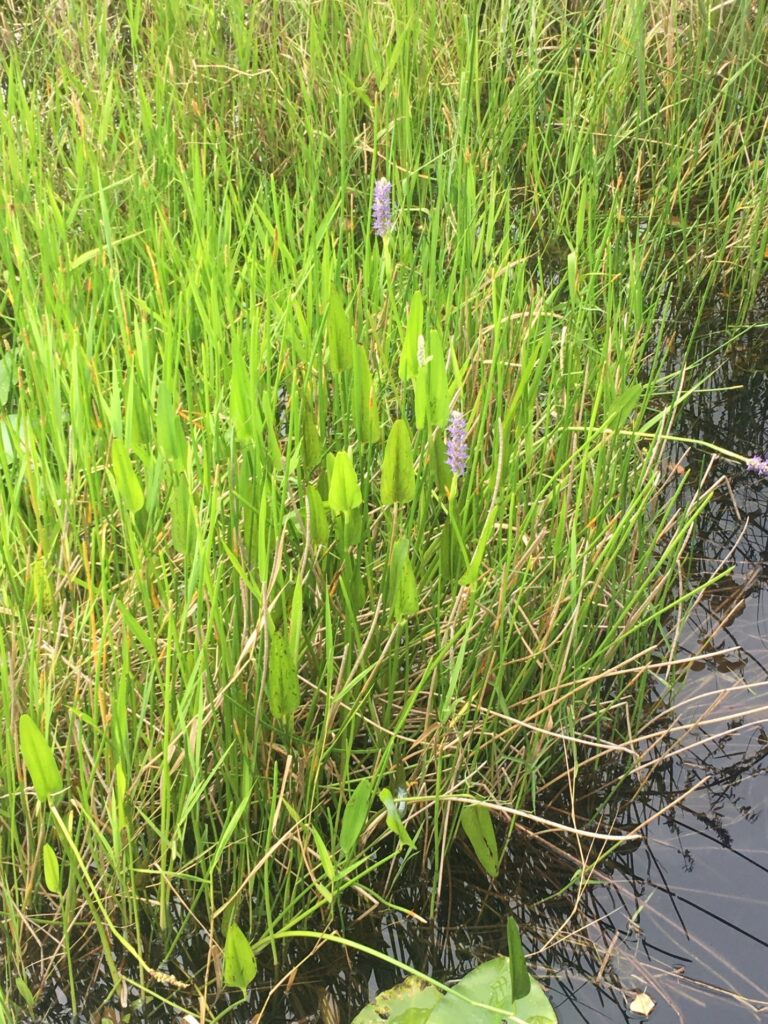
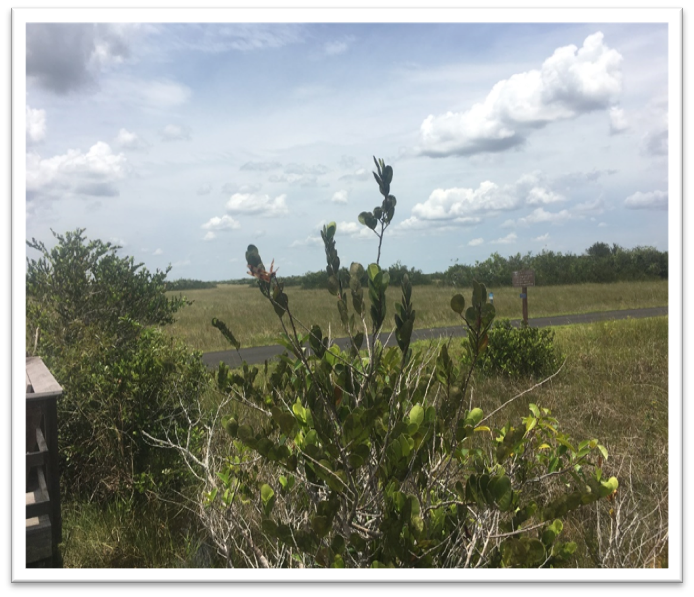
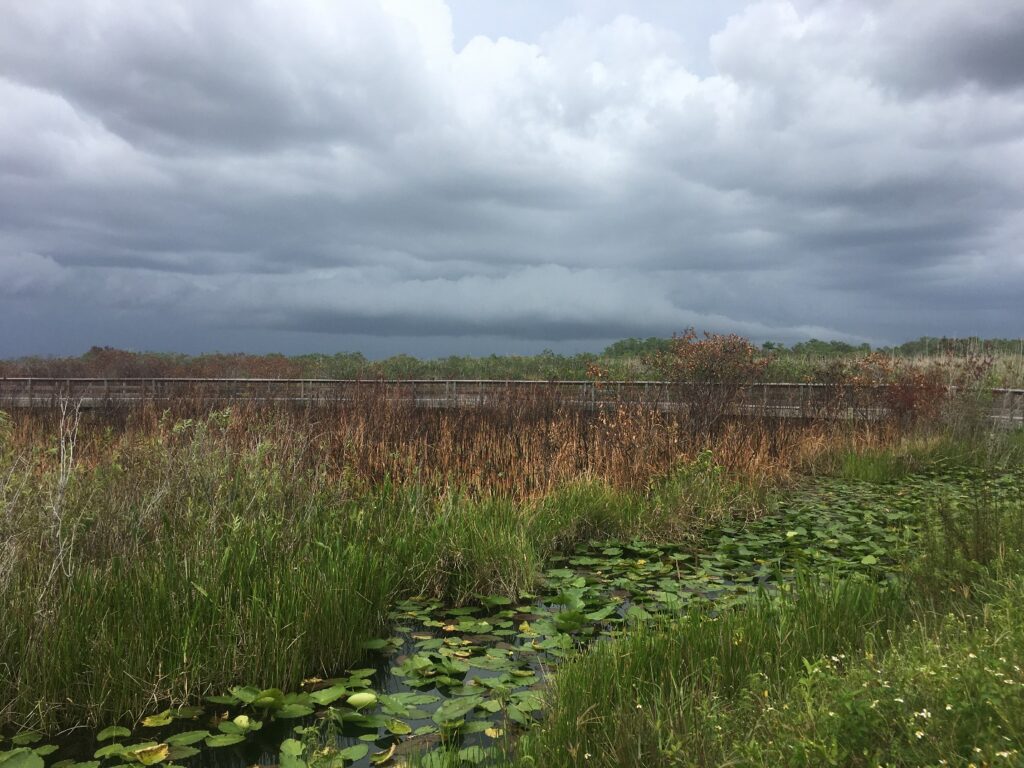
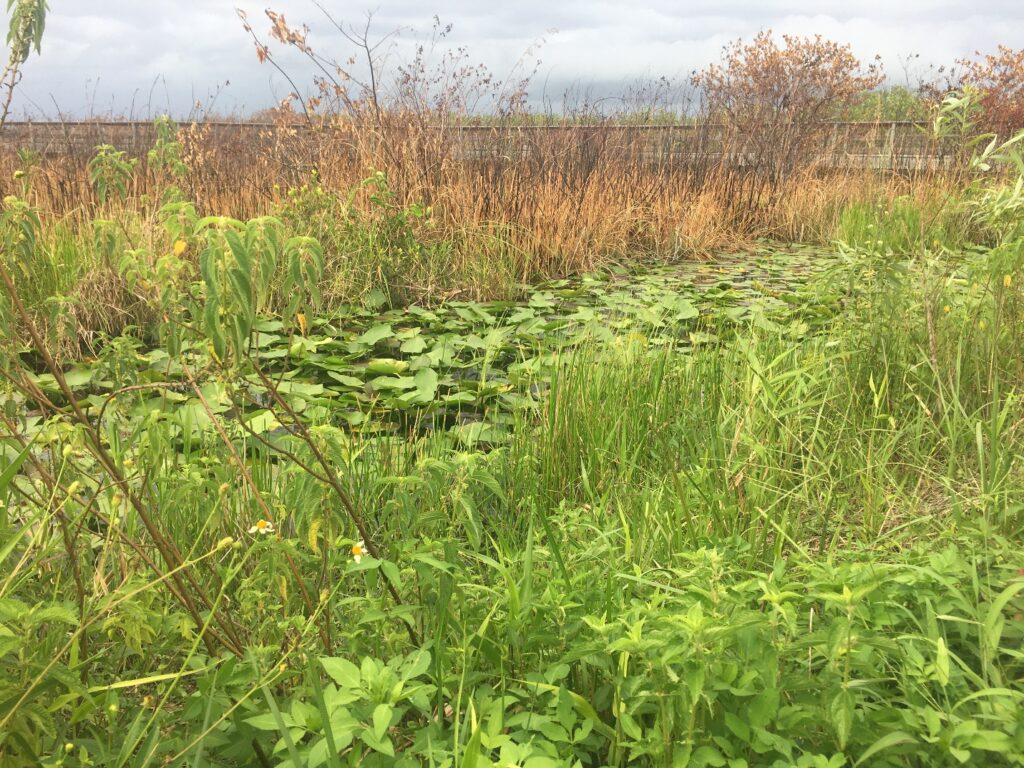
Grasshopper species are found in the southeastern United States. The large, brightly colored Eastern lubber grasshopper is hard to miss. Its bright orange, yellow and red colors are a warning to predators that it contains toxins that will make it sick. But the colors are a spectacular sight for people just watching the slow-moving, large grasshopper displaying its hues.
It is much better to watch than touch this insect. If you pick up this grasshopper it will make a loud hissing noise and secrete an irritating, foul-smelling foamy spray.
As we all should do when visiting our parks and wildlife I just observed and took photos, avoiding the loud hissing noise and irritating, foul-smelling foam spray.
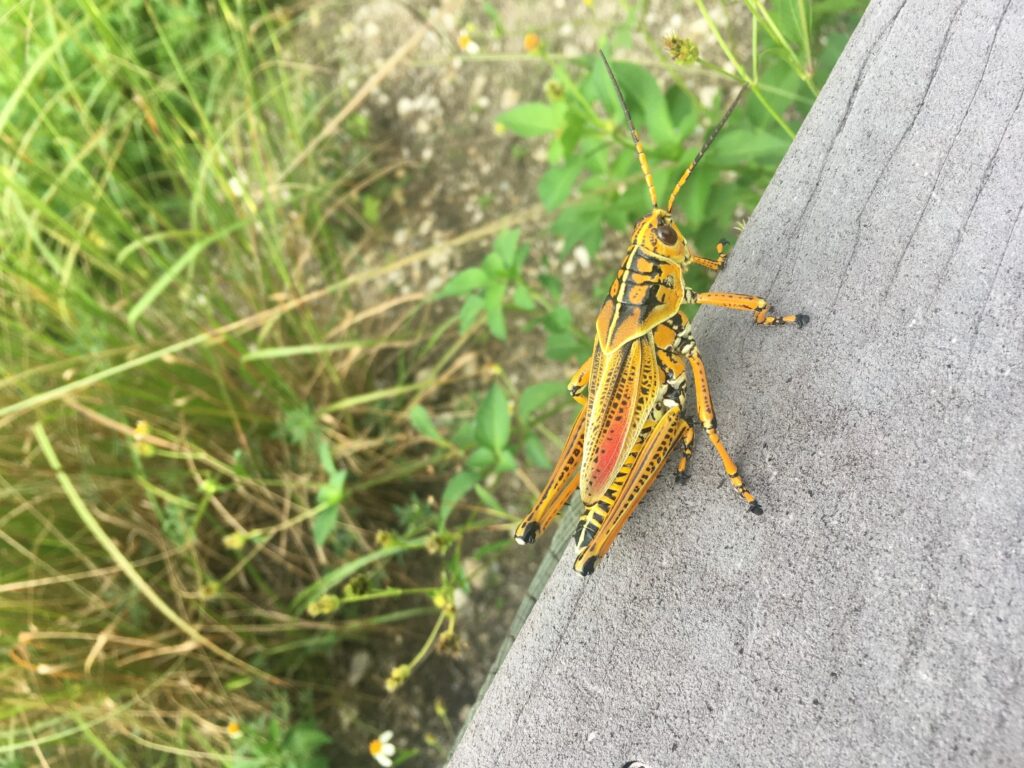
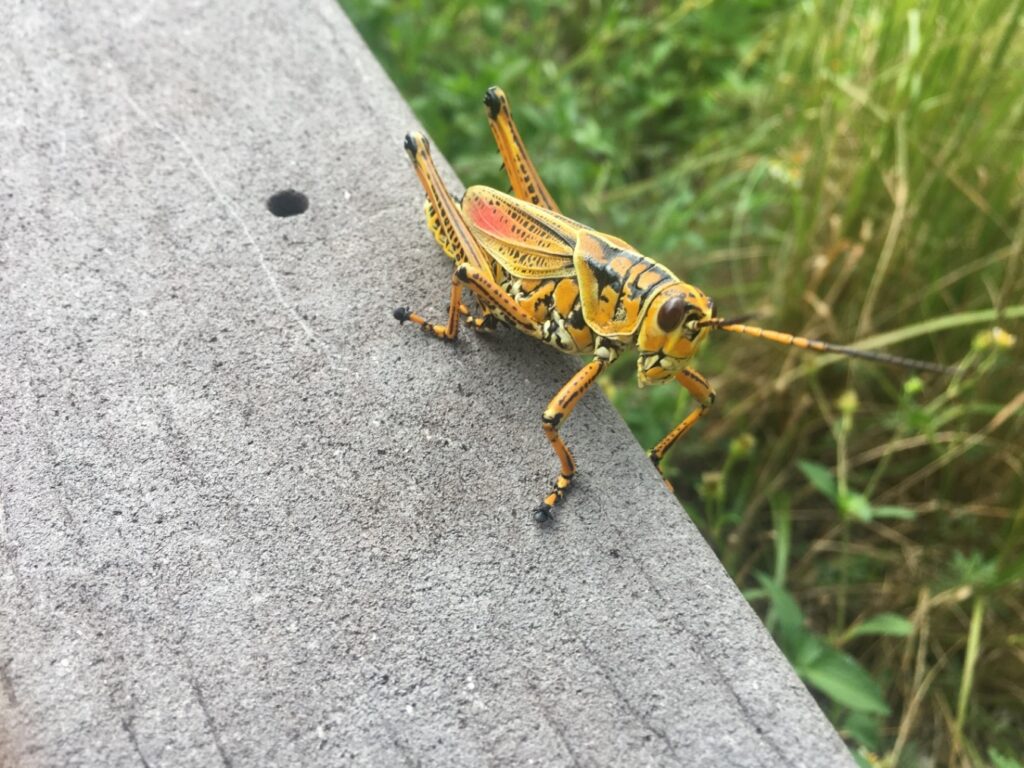
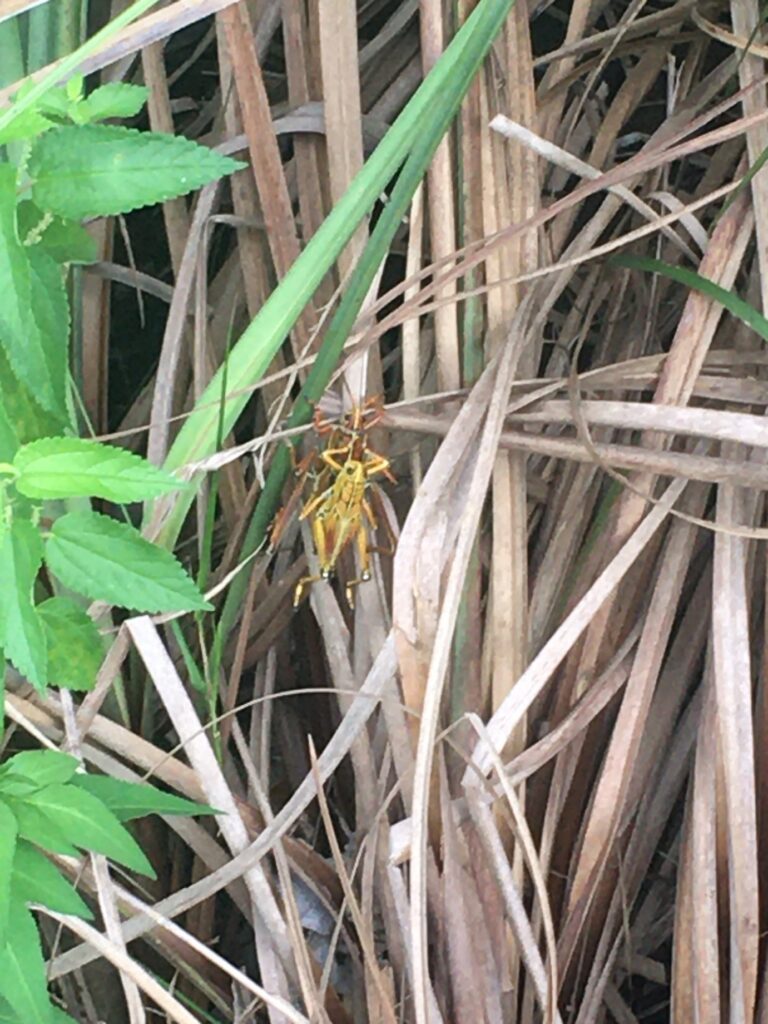
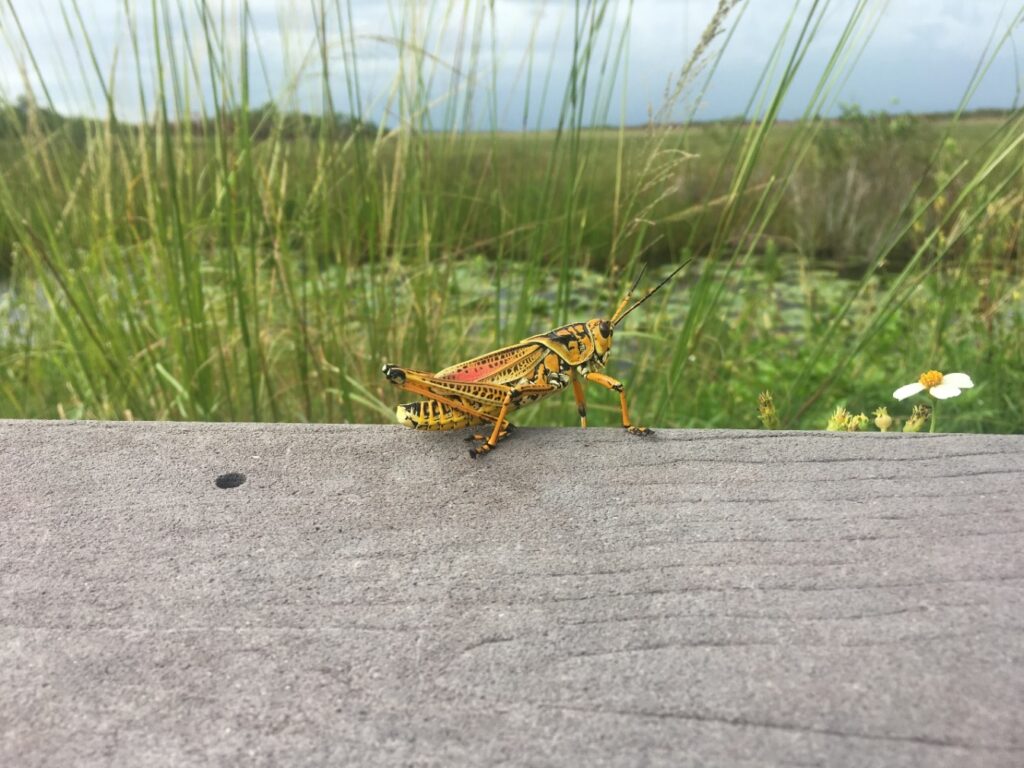
Can you find the water turtle? Numerous species of turtles populate the waters of the Everglades, including the Florida Softshell, Florida Snapping Turtle, Florida Chicken Turtle, Atlantic Leatherback and hawksbill, Striped Mud Turtle, Peninsula Cooter, and the Lowly Stinkpot.
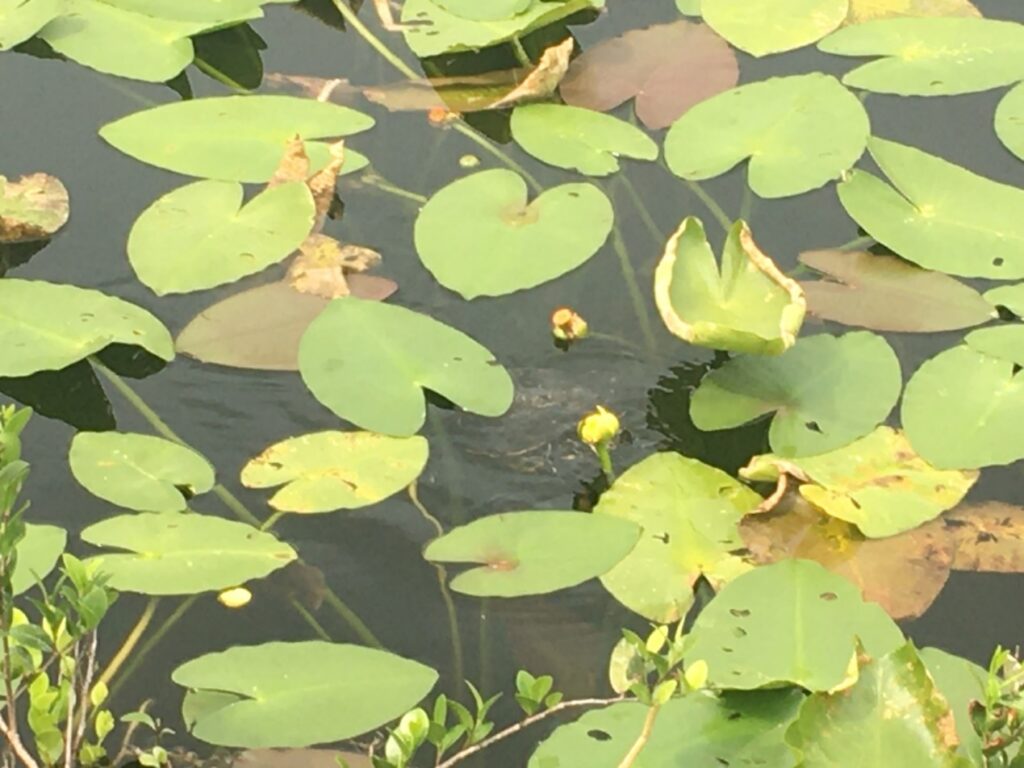
The Everglades National Park covers more than 1.5 million acres in South Florida. While most of the park is remote and inaccessible, there are plenty of spots within a few minutes of Miami and Naples, where you can get a feel for the “River of Grass”.
Your first decision in visiting the Everglades is which entrance to use; there are three and they are hours apart from each other. If you want the opportunity to observe the heart of the Everglades you can either enter through Shark Valley in Miami or the Main Entrance of the Park in Homestead. However, if you are looking to explore the Gulf Coast, then you should plan to take a boat trip to the Gulf Coast in Everglades City.
View the map of the Everglades to get a better idea of the different regions of the Everglades.
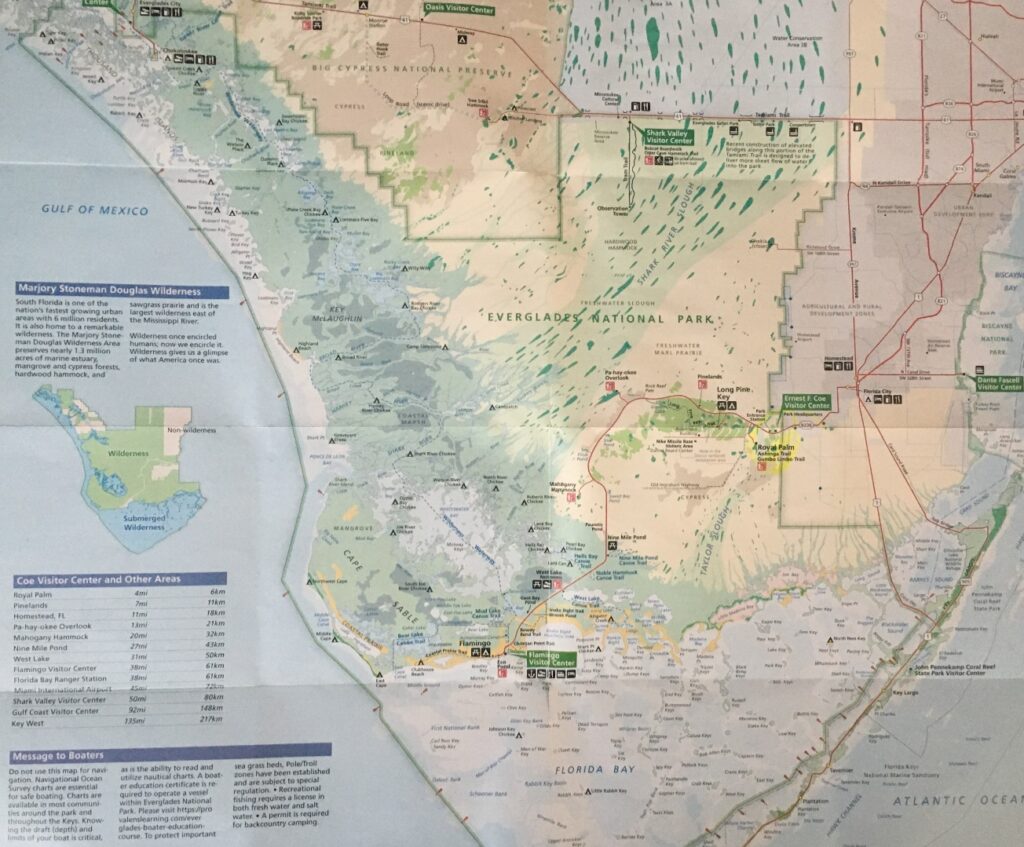
Recommended Things To DO in Everglades National Park
Glide over Florida Bay by tour boat or kayak for a chance to glimpse an alligator, crocodile, manatee, or dolphin. Watch as the sun sets over Flamingo, the southernmost point in mainland Florida. Explore the pinelands by bike, paddle amongst the mangroves on Nine-Mile Pond, or tour the historic Nike Hercules missile base. Join a ranger on a slough slog deep into the heart of a cypress dome.
Find solitude on your own on a week-long canoe trip, camping along the 99-mile Wilderness Waterway.
Along the Main Park Road in Homestead, which connects the south entrances, there are a series of stops with short walks that show the Everglades’ diverse ecosystems.
Lessons Learned in Everglades National Park:
American Crocodile- Everglades National Park is also the only place in the world where Alligators coexist with Crocodiles.
The Everglades is the only place in the United States where one can see Crocodiles in its natural habitat. It is the mixture of freshwater from Lake Okeechobee and saltwater from the ocean that makes this dual existence possible.
Early December to April is the best season. The weather is pleasant, fewer mosquitos, and there will be better wildlife viewing. During my visit in July, it was hot and humid, bugs abound and most wildlife was apparently also out on vacation.
Alligators are nocturnal, thus most active from dusk to dawn. Avoid being near the water’s edge or swimming during this key feeding time. Alligators lunge from still water to catch unsuspecting prey near the shoreline.
The Everglades is a river that’s constantly moving, often referred to as The River of Grass. Water trickles from north to south from Lake Okeechobee, forming a slow-moving river that’s sixty miles wide and a hundred miles long. The many types of habitats to see in the Everglades include sawgrass marshes, open-water sloughs, cypress swamps, hardwood hammocks, mangrove swamps, and pinelands. Playing with the only alligator I spotted on this trip. And the only one a person should play with.
